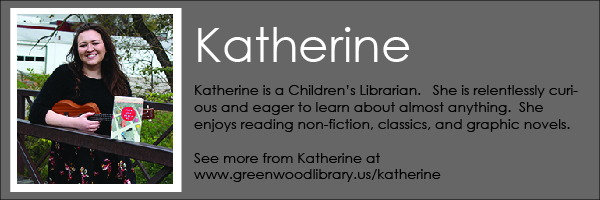 STEAM (Science, Technology, Engineering, Art, Math) is all the rage in children’s programming at the moment. If you’ve been to our Children’s Department, you’ve seen our STEAM wall with kits full of fun activities that build these skills. We regularly offer STEAM programming for our elementary-aged kids on Mondays, and I wanted to extend some of these concepts into our Terrific Two’s class.
STEAM (Science, Technology, Engineering, Art, Math) is all the rage in children’s programming at the moment. If you’ve been to our Children’s Department, you’ve seen our STEAM wall with kits full of fun activities that build these skills. We regularly offer STEAM programming for our elementary-aged kids on Mondays, and I wanted to extend some of these concepts into our Terrific Two’s class.
Both of my parents were chemists, and I was raised in what would now be considered a STEM-heavy environment. My brother and I heard lectures on space, chemistry, physics – whatever struck my father’s fancy when he drove us to school in the mornings. We were encouraged to be curious, ask questions, and experiment to learn more. To me, those are the core motivations in STEAM programming. I’ve always loved sharing STEAM stories in my baby/toddler storytime, Jump Start. We’ve talked about the chemical reaction that makes cakes rise in the oven, why trees change color in the fall, and so much more. Extending these STEAM concepts into our activities during Terrific Two’s seemed like a natural step.
This spring, I started including explanations behind the activities that we do, and the ways in which they connect with various STEAM concepts. Now, our activities have their usual signs that include additional information on the inside. I’ve also started adding more STEAM-heavy activities. For example, one of our activities was building a “bee hive.” I had a stack of yellow hexagons and children were encouraged to arrange them so that they fit together. In this activity, children were learning about shapes, an early math concept. They were also developing special relations, figuring out how to arrange the shapes to have them fit together. The end result created a pattern, also giving kids an opportunity to learn from what they’ve completed and predict future outcomes. And, of course, the biology inherent – how bees create hives using this pattern. The activity itself is basic, but the skills it develops are core to STEAM skills.
Our children are already learning STEAM concepts by playing and interacting in the world. But the knowledge of what they are doing allows us to scaffold these moments. Scaffolding in children’s education is using what children are already doing and building upon it – making suggestions, asking questions, and pushing them a little further. If they are already using basic engineering concepts to build a tower, you could make the suggestion that a larger base will help them create a sturdier structure. If they are playing with a toy car, ask them what they think may happen if the wheels were removed (and, if possible, try removing them to show the difference). Use scaffolding to encourage experimentation and curiosity. Answer questions, prioritize play, and – most of all – support your little scientist.
One of my favorite resources for creating these STEAM activities is “Let’s Talk, Read and Sing About STEM,” a tip-sheet created by the U.S. Department of Health and Human Services and the U.S. Department of Education in 2016. If you want to learn more about STEAM programming for you children, especially ways in which you can encourage this type of learning, this is a great starting place.
https://www.acf.hhs.gov/ecd/learning-about-stem

